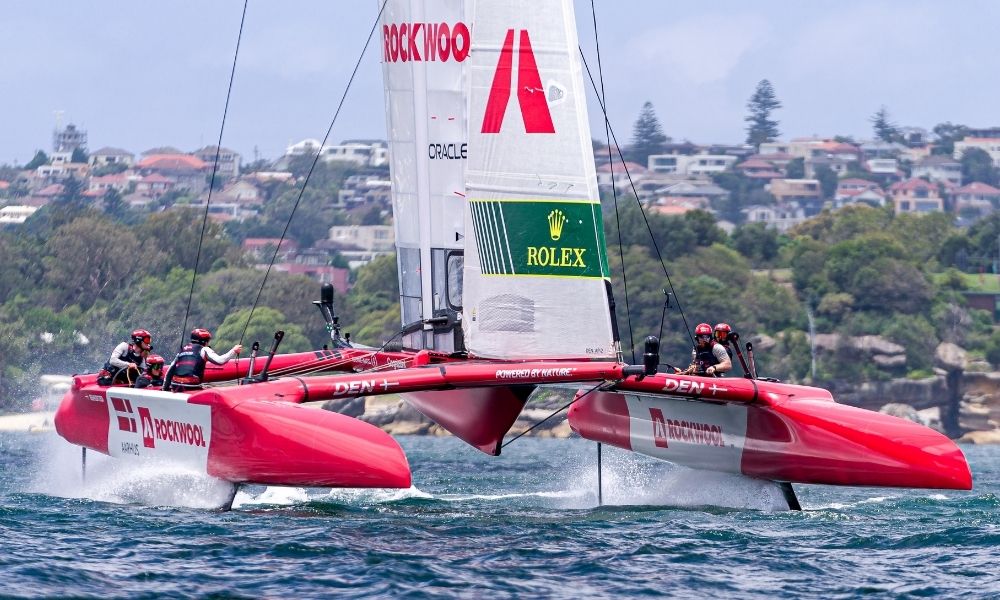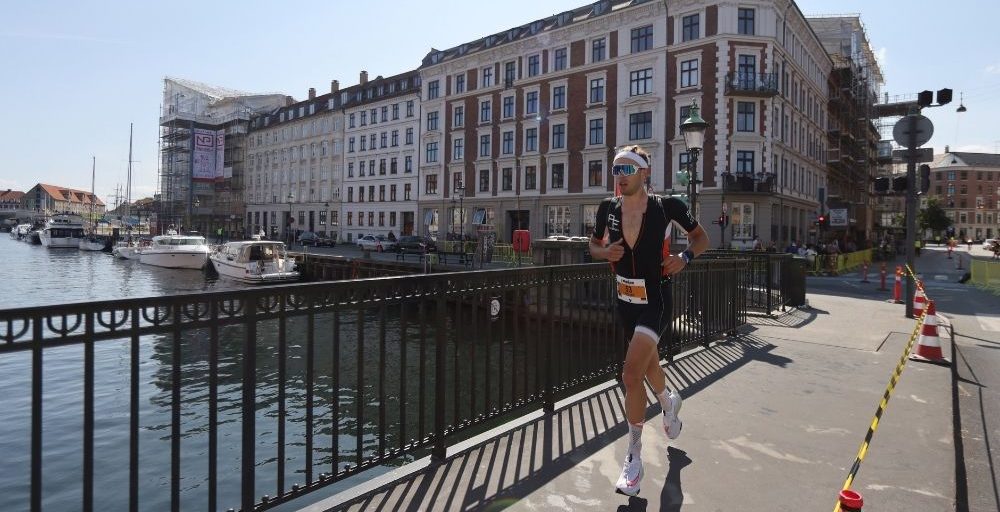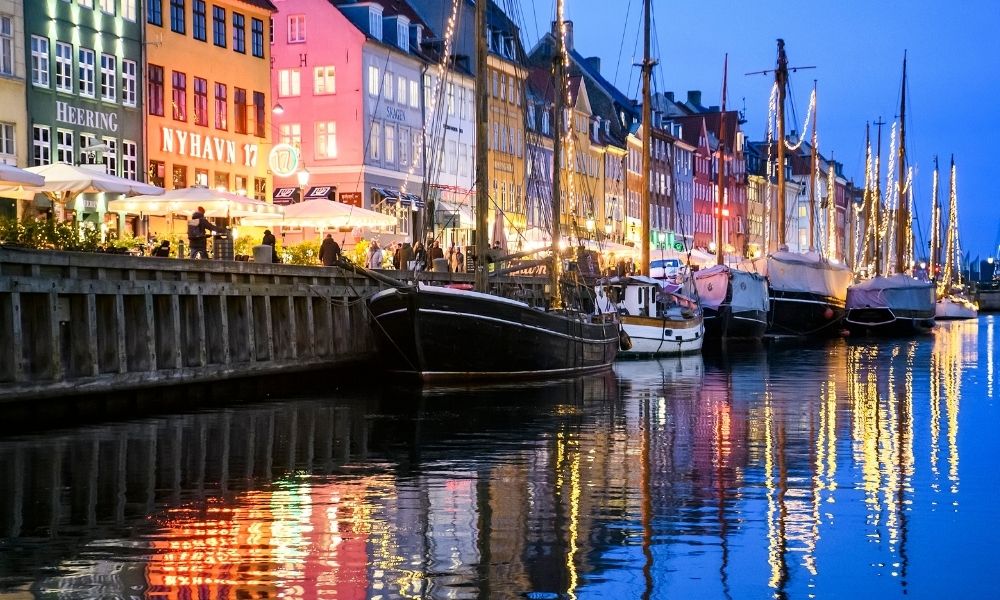
With an identity as clear as the crystalline waters of Nyhavn, the famous harbour that lies in the city’s centre, Copenhagen is a place of innovation, inclusion and conscience. After hosting a plethora of recent sports events, including four matches during last summer’s Uefa Euro 2020, the city’s reputation as a sports destination is also growing internationally.
“I heard a rumour that, as a brand, Copenhagen is even stronger than Denmark,” remarks former Olympic sailor Jonas Høgh-Christensen, who now serves as the Nordic director of SailGP. “It’s a very iconic city, not just in Denmark being the capital, but on a global scale.”
A flagship for sustainability
A common theme among Copenhagen’s sports events is a focus on sustainability and, specifically, a goal of leveraging sports to showcase solutions that could bring about a greener future.
SailGP, which launched in 2020, is no exception. In December, Copenhagen was unveiled as the latest host destination to be added to the global sailing league’s calendar for its third season in 2022. Høgh-Christensen, who won silver at London 2012, has high hopes for what Copenhagen can bring to the table, believing that it can even become SailGP’s “flagship event for sustainability” as the competition and the city share a commitment to advancing sustainable solutions.
Indeed, sustainability is at the absolute forefront of both Copenhagen and SailGP’s objectives. Recognised internationally as a leader in this field, the Danish capital is widely seen as the world’s greenest city. Since 1973, when a city-wide oil shortage exposed its over-reliance on fossil fuels, Copenhagen has committed itself to renewable energies as it sets its sights on becoming completely carbon neutral by 2025.
With this in mind, Høgh-Christensen is confident that when SailGP’s fleet of hydrofoiling F50s take to its Baltic waters in August, the grand prix will have the potential to be the “most sustainable” of all the city’s events.
“I actually think Copenhagen will become a role model for the 11 or 12 other cities that we will attend in 2022 and 2023,” he affirms, speaking to SportsPro during late November’s Smart Cities & Sport Summit. “From landing in the airport, to getting to the venue where we will be sailing, we have a metro station, literally a one minute walk from our tech area.”
Høgh-Christensen notes that teams will be staying at a “fully sustainable” carbon neutral hotel during the event, while electric shuttle buses will transport them around the city. He insists that in Denmark’s capital, “the whole infrastructure is there to [have] a very minimal impact event.”
Acknowledging Denmark’s “vast maritime history”, he adds: “We’ve built a lighthouse for the sport in Denmark,” referring to the role Copenhagen and the country can play in further promoting the competition and making sailing, which has long been stigmatised for only catering to middle and upper classes, a more accessible sport. To that end, Høgh-Christensen declares that SailGP is “trying to create a platform that’s for everybody”, adding that “the best sailors we have in Denmark right now are female”, such as Anne-Marie Rindom, who claimed gold at the Tokyo 2020 Olympics.

On SailGP’s broader ambitions in Copenhagen, Høgh-Christensen continues: “For sailors who would not necessarily be equipped to sail at the Olympics, we have made a bigger platform from the professional scene. We’ve also created something that’s really, really cool and that people want to be a part of.”
Aiming to encourage the younger generation to take up more eco-friendly lifestyles, SailGP’s ‘Inspire’ youth engagement initiative will also work in tandem with communities around Copenhagen to promote green causes and awareness.
“The goal is to bring in more than 1,000 kids in Copenhagen to learn about the four elements, and what you can do working with those elements in progressing sustainability,” Høgh-Christensen explains, listing water, sun, earth and wind. In addition, SailGP’s internship programme will offer opportunities to learn about the league’s eco-friendly projects, with the possibility of securing a full-time position afterwards. During its Champions For Change events, the sailing league also hosts thought leaders on sustainability to discuss new ideas and solutions.
Indeed, Copenhagen will be more than just a safe harbour for sailing crews during the grand prix events. The city will take an active role in promoting sustainability, and lobbying for healthy, active communities. Commenting on the city’s work with SailGP on such initiatives, Høgh-Christensen alludes to the shared vision and eco-consciousness which will characterise the event – although he accepts “there’s still plenty of stuff that can be done”, adding: “We want to do that development together.”

Rethinking urban spaces
Recently announced as the 2023 World Capital of Architecture by Unesco, Copenhagen provides a unique backdrop for sporting activities. Sculpted in a way that invites its residents and visitors to lead an active lifestyle, the streets, buildings and even waters of Copenhagen have been modified to create new urban spaces for exercise.
Architecture firm Effekt’s conversion of a disused windmill factory into a public skatepark exemplifies how the city’s infrastructure is being used to support physical activity. Elsewhere, its harbour has been cleared for swimming and kayaking with three pool areas, while the CopenHill ski slope, which features on top of the largest incinerator in Europe, makes creative use of an otherwise empty space.
Reflecting on the city’s practical approach to urban planning, Kim Mejnert Frydensbjerg, head of events at Wonderful Copenhagen, talks through the ways in which the city can capitalise on its culture and infrastructure when hosting events. “Denmark is known as a country where events are organised very well,” he says. “We are timely, we have good service, and we do what we promise.”

Citing the intention of embedding physical activity into the daily lives of Copenhagen’s citizens, he stresses the city’s flexibility in where exactly it hosts events. “[They] can both be on the playing fields, but can also be on the roof of our building, and everywhere else,” he says. “We have our squares, our buildings, etc – let’s make them open for events also. It’s not always easy because [there are] a lot of restrictions. If it’s possible, then let’s see if we can make it accessible for people.”
Frydensbjerg explains that sporting events can also act as a showcase for Copenhagen’s urban features, such as the clean harbour, and promote the city in conjunction with its sustainable approach.
“When you arrive as a competitor, or a spectator, you will actually get the feeling of – ‘hey, [sustainability] is not just something that they’re talking about, it’s actually a part of how we’re doing [the event]’,” he says. “For me, that’s the role the events are playing, of course, using them to showcase that the water is clean, that you can actually swim around in the harbour.
“We’re always using the pictures of the swimming lanes in the harbour, because it is a good way to show that [Copenhagen] is a clean place to be, and the events are an easy way to get a lot of people looking at it.”
Among those events taking full advantage of Copenhagen’s urban landscape are mass participation races, such as the annual Ironman triathlon and road marathon. Both events course through the central avenues of the city, showcasing its most famous attractions, namely the City Hall, the Danish royal family’s Amalienborg residence, the parliamentary building of Christiansborg Palace, and the famous gardens of Tivoli.
“It’s unique in Copenhagen that we can run only in the inner city,” notes Dorte Vibjerg, the chief executive of Sparta Athletics and Running, a non-profit association based in Copenhagen. “We don’t have to go out into any industrial quarters, and there aren’t very many places where you can do that.

